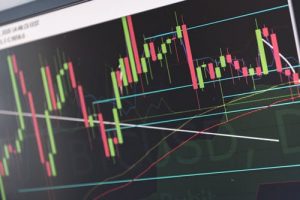While CFD trading has sufficiently less risk compared to actual capital trading, there is no guarantee that you will make money right off the bat. Contract For Differences still operates under the same principle as regular asset trading, so one wrong move can wipe out your entire investment portfolio.
So what exactly is CFD trading? And what strategy can you use to ensure you don’t fall victim to the versatile, unforgiving fx trading market?
What is Contract for Differences Trading?
Contract for Differences is a recent, lucrative technique by novice investors to trade in forex and other assets. It is referred to as derivative trading because the trader does not purchase the actual asset-instead, you speculate on whether its price will go up or down.
In simpler terms, CFD trading is a contract between you-the trader (buyer), and a broker (seller)-where the profit you make will be determined by the price at the beginning of the contract at the value at the end.
It works in such a way that if there is a profit at the end of the trade, then the seller (broker) pays you the buyer (trader), and if there is a loss, then the trader pays the broker the difference.
4 Ways to Profit from CFD Trading in 2021
CFD trading has, over the years, become a popular trading avenue for retail traders. The downside, however, is that this popularity has led to a series of over-trading and nonstrategic practices in an attempt to make huge profits. Note that while it is a lucrative technique, it is just as easy to lose money as it is to make it.
For this reason, let’s look at four fundamental practices that will ensure you develop a full-proof CFD trading strategy.
Invest in Thorough Market Analysis
The first and most important technique you should master in trading is technical analysis. The primary focus of CFD trading is to target assets that have frequent price movements, mostly day trading. Ensure you study price charts of popular stocks and analyze trends to develop a pattern.
Don’t just focus on price fluctuations-evaluate market context to see how technical indicators influence movements. You will also need to be aware of public opinion, political announcements, and other fundamental indicators, especially when making large-money trade moves.
Remember that CFD trading does not deal with virtual money. The losses and profits are tangible. Everything that affects market forces applies. Strictly study the concept of market force analysis and use this information to develop your efficient strategy.
DO NOT Overlook Risk Management
As lucrative as CFD trading is, it still has the same risks. As mentioned earlier, one wrong move can bankrupt you. Always play it safe. Never put more than 1% of your investment portfolio on a single trade, and never be too sure about your prediction. No matter how confident you are in your analysis, remember that the fx market is volatile and unpredictable.
Another trade secret is to never over-leverage, over-trade, or over-think. Develop a strategy and stick to it. The main reason why up to 78% of novice traders fail in their first year is that they stake with no strategy.
The principle behind risk assessment is knowing the losses you can manage and maintaining your bottom line. Don’t put your portfolio on the line if a loss will hurt you beyond the point of recovery.
Be Decisive
Another reason why many CFD traders fail is trying to make quick profits by trading multiple different assets a day. Binge trading is a recipe for disaster and results from trying to recover from an enormous loss. Always have your eyes on the ball. Pick an asset that is trend-worthy and one with an easily predictable price movement.
Stick to your guns. Don’t trade everything, and don’t trade too frequently. Emotional trading is your worst enemy in commodities trading, so always take a break and reboot after a huge hit.
Combine Fundamental and Technical Analysis
Trading is all about strategy, whether you’re investing in Fortune 500 stocks, retail trading, or copy trading. The two constant approaches in every technique are fundamental and technical analysis. While technical analysis is more appropriate in CFD trading, fundamental analysis gives you a precise picture of factors that may influence price movements in the long term.
If you want to do more than day trade, you will need to incorporate more complex economic variables such as financial reports, company position, and popular opinion. Technical analysis looks at a brief history of price movements. Each technique has its limitations, but together-can form a winning strategy.
Key Take Away
CFD trading gives you global market access, higher leverage, and it does not conform to the usual trading rules. Essentially, you get a better trading margin at a much lower risk. The trick here is to develop a strategy that will help you take advantage of all these perks to guarantee profitability.







